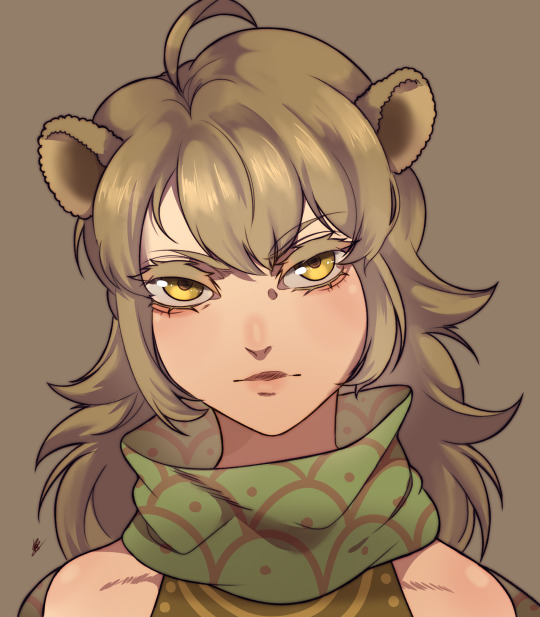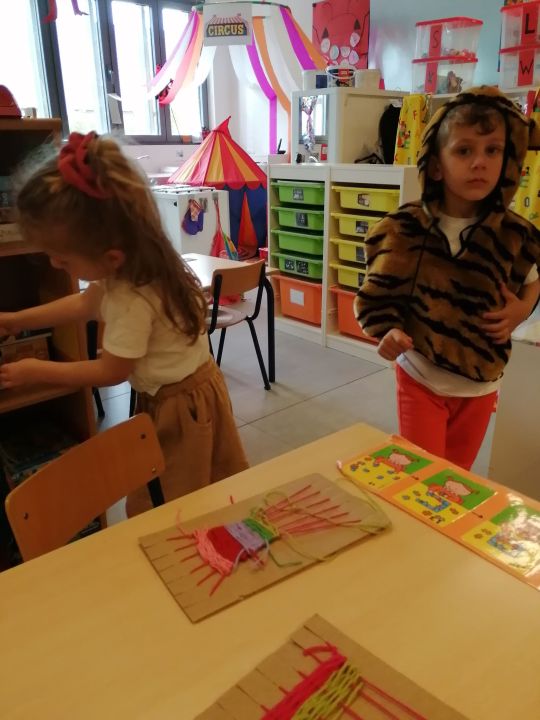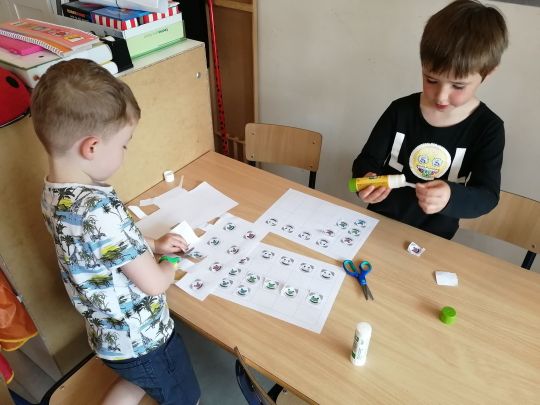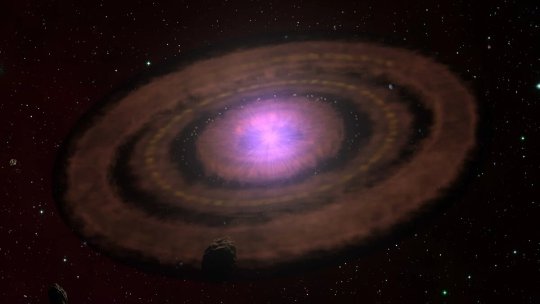#sierk
Photo






I re-designed some of my very first OCs!
#ocs#original character#draek sarkany#sierk#theron#nailah#liath#meli hundyr#my art#i used to roleplay with them on da when i was a cringe teenager good times#they could pass as LI don't they since they're all single#maybe in the future whenever i write their story
47 notes
·
View notes
Photo

Sierk van Meeuwen Cleopatra 2019
204 notes
·
View notes
Photo

Sierk Schröder (Dutch, 1903-2002) - self portrait
14 notes
·
View notes
Text

Malva Marina Reyes Hagenaar, la figlia abbandonata di Neruda
Il poeta cileno, Pablo Neruda,ha avuto un'unica figlia dalla prima moglie, María Antonia Hagenaar Vogelzang di origine ebraica che lui aveva ribattezzato ''Maruca''. La bambina nata a Madrid, al principio era stata accolta con gioia dal poeta..fino a quando non seppe che la bimba era affetta da idrocefalia, allora non ci pensera' due volte ad abbandonare mamma e figlia-
Tornera' in Cile a scrivere le sue poesie e a vivere nuove storie d'amore. La moglie che gli neghera' il divorzio provera' a chiedergli aiuto per la figlia che non puo' ne' parlare ne' camminare ma non ricevera' piu' nulla.
La moglie con l'aiuto di un amico andra' a vivere nella capitale olandese essendo lei di origine olandese.
Le difficoltà si susseguono. Maruca vive in pensioni , il denaro si esaurisce e sua figlia, con il cervello sempre più pieno di liquido, richiede molta più attenzione. Attraverso organizzazioni religiose come Christian Science, Maruca riesce a trovare una famiglia di olandesi residenti a Gouda. Hendrik Julsing e Gerdina Sierks che si accordano per prendersi cura della bambina mentre sua madre cerca lavoro a L'Aia, a meno di un'ora di auto. È trattata come una di famiglia fino alla sua morte, ad otto anni, il 2 marzo 1943. Assumono persino una babysitter, Nelly Leijis, per dedicarsi esclusivamente alla bimba.
Maruca, nel frattempo, non rifiuta nessun lavoro. Si offre di pulire i pavimenti, prendersi cura dei malati, qualunque cosa serva per aiutare la figlia indifesa.
Non ha piu' i genitori e sua figlia cammina verso una fine drammatica. Attraverso la mediazione trova finalmente lavoro, anche se non ben pagato, presso l'ambasciata spagnola a L'Aia. È sotto il comando di José María Semprún, padre dello scrittore Jorge Semprún, poi espulso nel 1964 dal Partito Comunista di Spagna (PCE), che Pablo Neruda ammirava così tanto. Ciò che questa donna deve ancora soffrire non lo immagina.
Poco prima della fine della seconda guerra mondiale, María Antonia fu arrestata dai nazisti - non per essere ebrea, ma per avere un passaporto cileno - e internata nello stesso campo di concentramento dove si trovava Anna Frank. Da Westerbork, progettato per ospitare 107.000 prigionieri, di cui circa 60.000 morti, per lo più ebrei e zingari ai crematori e alle camere a gas di Auschwitz e Treblinka, in Polonia. Maruca vi trascorre un mese tra filo spinato, soldati delle SS e cani addestrati a uccidere. Ma questa volta la fortuna non le avrebbe voltato le spalle. Quando il campo fu rilasciato (15 aprile 1945) dalle truppe canadesi, trovarono vivi solo 876 prigionieri. E tra questi, la moglie abbandonata di Neruda. Nove giorni prima dell'apertura delle porte dell'inferno, Anna Frank, la sua vicina di campo, morì lì.
Non è rimasto nulla di Maria Antonia Hagenaar. Non una lapide che indica la fine del suo percorso . Tre anni dopo il suo rilascio, si reca in Cile per cessare il doloroso capitolo nerudiano. Nel novembre del 1948 firmò il divorzio e un accordo finanziario. Gli ci voleva ancora per tornare in Olanda. Dicono che sia diventata dipendente dall'oppio. Fino a che un cancro la uccise, nel 1965, a L'Aia,ha chiesto di essere seppellita non lontano dalla tomba dove sono i resti della sua amata Malva Marina, che non smise di visitare fino alla fine dei suoi giorni.
L'esistenza di queste due creature e' stata ignorata fino ad ora e sfido a trovarne traccia nella patria di Neruda, il poeta che canto' l'amore come pochi...ma come tanti non seppe amare mai.
Incredibile come nella storia dei comunisti non si trovi un solo essere degno di essere chiamato umano!
39 notes
·
View notes
Photo










Thema circus met juf Olivia in de klas en op schoolreis naar De Sierk zorgde voor gelukkige kindergezichtjes!
3 notes
·
View notes
Text
0 notes
Video
ALCAZAR Global Networking - Sierk Schröder Site
Dec 1997
Archived Web Page
🧩
0 notes
Text
Fwd: Graduate position: Mainz_Germany.HumanGenomicDiversity
Begin forwarded message:
> From: [email protected]
> Subject: Graduate position: Mainz_Germany.HumanGenomicDiversity
> Date: 17 October 2023 at 05:16:12 BST
> To: [email protected]
>
>
> We have an open position in my group at BioNTech SE. This is a PhD
> position in a corporate environment but with a strong academic partner
> (TRON, Mainz, DE) and a population genetics component to it.
>
>
> Sahin et al (2017, Nature) recently introduced the concept of
> individualized mutanome vaccines to mobilize immunity against a spectrum
> of cancer mutations. Our group conducts research at the interface
> of cancer genomics, bioinformatics, and population genomics, and we
> are currently searching for a PhD student to conduct bioinformatics
> and statistical analyses of genomic diversity at the individual and
> population level to improve our pipeline for developing individualised
> mutanome vaccines. We are seeking candidates with a background
> in bioinformatics, computational biology, evolutionary genomics or
> transcriptomics, population genomics. The candidate should demonstrate
> skills in programming (Python and/or R) and a strong interest for genomics
> and statistical genetics. This project is part of the 2024 ATLAS PhD
> program (project: P07) and application should be made through the ATLAS
> website: https://ift.tt/cd5x3r4 31-10-2023.
>
> Stefan Laurent
> [email protected]
>
> Dr. Stefan Laurent
> Associate Director Tailored Omics Technologies, Bioinformatics R&D
>
> [email protected]
> BioNTech SE
> An der Goldgrube 12
> 55131 Mainz
> Germany
> www.BioNTech.com
>
> Sitz der Gesellschaft: BioNTech SE, An der Goldgrube 12, 55131 Mainz,
> Germany Amtsgericht Mainz HRB 48720 | USt.-IdNr. DE 263 382 495 |
> EoriNr: DE 1070347 Vorstand: Prof. Dr. med. Ugur Sahin | Sean Marett |
> Dr. Sierk Poetting | Ryan Richardson | Prof. Dr. med. Özlem Türeci |
> Jens Holstein | Dr. James Ryan
>
>
> Stefan Laurent
0 notes
Text


My OC Villain League!
(Happy Valentines day from them I guess lol)
#original characters#tw: blood#ocs#willem#eredir#sierk#jorge vlachos#my art#they're all terrible ppl#and also very bisexual#i really like em#i have more villains now but they were the first#villain league
24 notes
·
View notes
Text
RE-branding?
When I first started this blog, I had a vague vision of what I wanted to express with this platform as well as my art. I was – and still am to some degree – waving in the dark, trying to find advice or indicators that what I am producing has value. But after almost a year of posting I have found a niche where I feel I can make a difference.
Photo by Sindre Sierk Rian
COC to Obscure Art…

View On WordPress
#acrylic#art#artist#blog#brand#creativity#creator#drawing#illustrator#norwegian#norwegian art#scandiinavian art#small business#thoughts
0 notes
Text
Leveraging The Past For A Future With Purpose
Leveraging The Past For A Future With Purpose
The organizational scholar Sierk Ybema distinguishes between two different but familiar kinds of stories that leaders tell about the organization’s relationship with the past. In the nostalgic view, the past was a “golden age” from which the company has unfortunately strayed. Leaders and employees often take such a view to resist change and critique present-day ideas and practices.
A second kind…

View On WordPress
0 notes
Text










Donderdag 19 mei gingen we op schoolreis naar De Sierk in de Haan. Het was er superleuk! Allemaal blije gezichten😀
1 note
·
View note
Photo


Planet-forming disks evolve in surprisingly similar ways A group of astronomers, led by Sierk van Terwisga from the Max Planck Institute for Astronomy, have analyzed the mass distribution of over 870 planet-forming disks in the Orion A cloud. By exploiting the statistical properties of this unprecedented large sample of disks and developing an innovative data processing scheme, they found that far away from harsh environments like hot stars, the decline in disk mass only depends on their age. The results indicate that, at least within 1000 light-years of the Earth, planet-forming disks and planetary systems evolve in similar ways. Some of the most exciting questions in present-day astronomical research are "What do other planetary systems look like?" and "How comparable is the solar system to other planetary systems?" A team of astronomers have now contributed crucial clues to solving this puzzle. "Up to now, we didn't know for sure which properties dominate the evolution of planet-forming disks around young stars," says Sierk van Terwisga, who is a scientist at the Max Planck Institute for Astronomy in Heidelberg, Germany. He is the lead author of the underlying research article published in Astronomy & Astrophysics today. "Our new results now indicate that in environments without any relevant external influence, the observed disk mass available for forming new planets only depends on the age of the star-disk system," van Terwisga adds. The disk mass is the key property when studying the evolution of planet-forming disks. This quantity determines how much material is available to be transformed into planets. Depending on the disk age, it may also provide clues about the planets already present there. External effects like irradiation and winds from nearby massive stars obviously impact the disk survival. However, such environments are rare, and those processes do not reveal much about the disks themselves. Instead, astronomers are more interested in internal disk properties such as age, chemical composition, or the parental cloud dynamics from which the young stars with their disks emerged. To disentangle the various contributions, the team of astronomers selected a large and well-known region of young stars with disks, the Orion A cloud. It is approximately 1350 light-years away from Earth. "Orion A provided us with an unprecedented large sample size of more than 870 disks around young stars. It was crucial to be able to look for small variations in the disk mass depending on age and even on the local environments inside the cloud," Álvaro Hacar, a co-author and scientist at the University of Vienna, Austria, explains. The sample stems from earlier observations with the Herschel Space Telescope, which permitted identifying the disks. Combining several wavelengths provided a criterion to estimate their ages. Since they all belong to the same cloud, the astronomers expected little influence from chemistry and cloud history variations. They also avoided any impact from massive stars in the nearby Orion Nebula Cluster (ONC) by rejecting disks closer than 13 light-years. To measure the disk mass, the team employed the Atacama Large Millimeter/Submillimeter Array (ALMA) located on the Chajnantor Plateau in the Chilean Atacama Desert. ALMA consists of 66 parabolic antennas, functioning as a single telescope with a tunable angular resolution. The scientists applied an observing mode that allowed them to target each disk efficiently at a wavelength of about 1.2 millimeters. The cold disks are bright in this spectral range. On the other hand, the central stars' contribution is negligible. With this approach, the astronomers determined the disks' dust masses. However, the observations are insensitive to objects much larger than a few millimeters, e.g. rocks and planets. Therefore, the team effectively measured the mass of the disk material capable of forming planets. TOP IMAGE.....This artistic impression illustrates what planet-forming disks around young stars often look like. They initially consist of dust and gas configured into rings of dense material. In time, the solid components grow into pebbles which eventually can evolve into planets. Since the ALMA observations used in this study are only sensitive to millimetre-sized dust grains, evolved disks with larger objects or even planets produce a relatively faint signal from the remnant material. The new results indicate that without external irradiation, such disks evolve similarly. After about a million years, most of them do not have enough mass to produce large planets like Jupiter. However, such planets may already have formed there. Credit: MPIA graphics department. LOWER IMAGE....This image depicts the giant Orion A star-forming cloud as observed by the SPIRE (Spectral and Photometric Imaging Receiver) instrument on-board the Herschel Space Telescope. It traces the large-scale distribution of cold dust. Orion A is about 1350 light-years away and consists of individual star-forming regions as indicated by their labels. The locations of planet-forming disks (+) observed with ALMA are indicated, while disks with dust masses above an equivalent of 100 earth masses appear as blue dots. The famous Orion Nebula, visible to the naked eye in the sky, hosts the Orion Nebula Cluster (ONC), including several massive stars emitting intense radiation. Credit: S.E. van Terwisga et al./MPIA
1 note
·
View note

